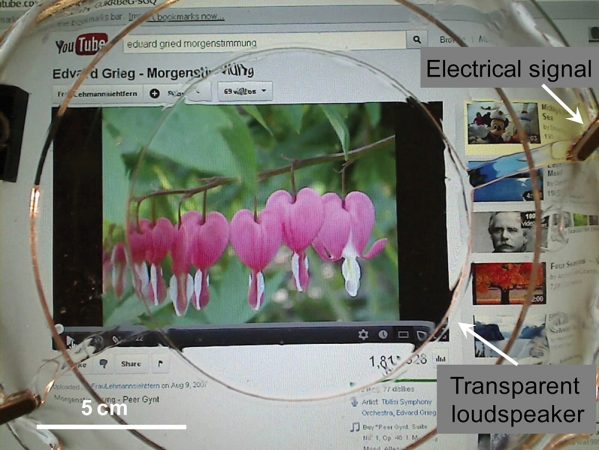A squishy speaker
A stretchy, gooey gadget uses simple materials to conduct electricity and amplify sound

This is not your typical loudspeaker. Researchers have unveiled a see-through speaker that conducts electricity, is elastic like skin and vibrates like Jell-O. The new device may one day show up in sound systems: Its designers imagine draping it like a transparent skin on the screen of an iPod to eliminate the need for speakers. Engineers may even use it to build soft robots or artificial muscles that can stretch alongside living tissue.
Scientists at Harvard University in Cambridge, Mass., built the new device from simple ingredients: rubber sandwiched between layers of a salty gel.
“The materials they use are familiar to everyone,” observes Muhammad Alam. This electrical engineer works at Purdue University in West Lafayette, Ind. Alam, who did not work on the new technology, told Science News that the inventors’ real innovation is how they put the materials together.
This is hardly the first attempt to build transparent electronics. But many of the earlier approaches used brittle materials like wires to carry an electric current. And the most see-through of those earlier versions let only about 95 percent of the incoming light pass through. The new device lacks wires, lets all of the light shine through it and should be remarkably inexpensive to produce.
The movement of charged subatomic particles, called electrons, creates the current known as electricity. In most electrical devices, these electrons race along metal wires. But the Harvard scientists wanted to avoid wires as much as possible. So they let saltwater substitute for the wires and electrons.
In their new system, a clear rubber pancake separates two layers of gel. Rubber is an insulator, which means electric charges can’t pass through it. That’s not true of the gels, which are made from saltwater. Salt contains ions, which are positively and negatively charged molecular fragments. Those ions float in the gel like free charges.
Until, that is, the scientists use those salty gels to complete an electrical circuit. They immersed a tiny wire in each gel and then applied a voltage. Voltage is an electric field that can cause an electric charge, like ions, to move. The positive ions lined up on one side of the rubber. The negative ions lined up on the other.
“Instead of electrons traveling though metal wires, now you have ions traveling through solution,” Christoph Keplinger told Science News. He’s a Harvard materials scientist who helped design the new device.
Because opposite charges attract, the positive and negative ions squeeze the rubber. This squeezing shrinks the rubber. When the voltage is turned off, it expands again. With a flip of a switch, the scientists can make the rubber layer shrink and expand repeatedly. The resulting vibration creates sound — just as in a regular loudspeaker.
Keplinger and his coworkers are now fine-tuning the gels in their system. And other researchers, excited by the technology, are looking for more ways to use it. For instance, consider putting the new device in the heel of a shoe, says materials scientist Yang Yang at the University of California, Los Angeles. As walking alternately compresses and releases the device, the wearer might be able to generate electricity. And that, he told Science News “might be fun.”
Power Words
current A flow of electricity which results from the ordered directional movement of electrically charged particles.
electron A negatively charged particle.
electronics Devices that are powered by electricity but whose properties are controlled by the semiconductors or other circuitry that channel or gate the movement of electric charges.
engineering The field of research that uses math and science to solve practical problems.
ion An atom or molecule with an electric charge due to the loss or gain of one or more electrons.
materials scientist A scientist who studies how the atomic and molecular structure of a material is related to its overall properties. Materials scientists can design new materials or analyze existing ones. Their analyses of a material’s overall properties (such as density, strength and melting point) can help engineers and other researchers select materials that are best suited to a particular use.







